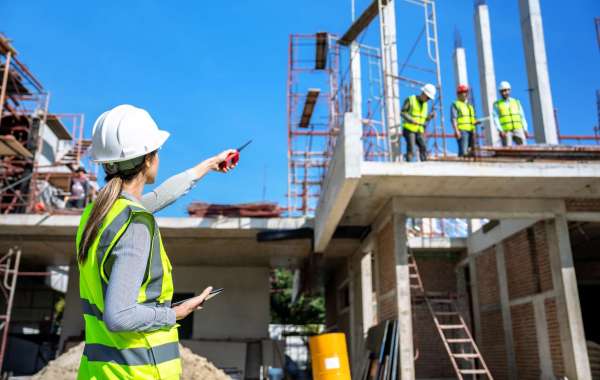Automatic shut-off systems are a cornerstone of modern safety in both industrial and commercial settings. They prevent accidents, reduce downtime, and ensure that machinery or equipment doesn’t run out of control when human intervention isn’t possible. Yet, installing these systems safely requires a mix of technical knowledge, planning, and awareness of operational risks.
Whether you’re a beginner in workplace safety or an aspiring professional exploring certifications, understanding the nuances of automatic shut-off system installation is essential. This guide walks you through seven practical tips to install these systems safely while highlighting real-world examples to bring the advice to life. If you’re considering expanding your expertise, an OHS international course can provide deeper knowledge and hands-on experience with safety systems.
Why Safe Installation Matters
Safety systems are only as effective as their installation. Poorly installed automatic shut-off devices can fail when needed most, leading to accidents, fires, or costly equipment damage. Consider a small manufacturing plant where a conveyor belt runs continuously. Without a properly installed shut-off system, a jam could cause overheating or mechanical failure, putting workers at risk.
Safety isn’t just about compliance—it’s about protecting lives and minimizing operational risk. Investing time and care in installation ensures long-term reliability.
1. Understand the Equipment and Its Requirements
Before installing any automatic shut-off system, you need to understand the equipment it will protect.
- Review manufacturer manuals carefully. They often provide guidelines for compatible shut-off systems and correct installation methods.
- Identify potential hazards such as flammable materials, high pressure, or overheating components.
- Check system specifications like voltage, load capacity, and environmental tolerances.
Example: In a chemical processing unit, certain shut-off valves are only rated for specific corrosive substances. Installing the wrong system could result in leaks or malfunction.
2. Conduct a Risk Assessment
A thorough risk assessment identifies where a shut-off system is most needed.
- Map out operational hazards and points of failure.
- Evaluate the consequences of system failure for both equipment and personnel.
- Prioritize installations in areas with the highest potential impact.
Practical Tip: Use checklists or software tools for risk assessment. Documenting findings helps ensure compliance with standards and provides a reference for future audits.
3. Choose the Right Type of Shut-Off System
Not all automatic shut-off systems are created equal. Your choice depends on the equipment and operational environment.
- Mechanical vs. electronic systems: Mechanical options are often simpler and more robust, while electronic systems provide precise control and integration with monitoring software.
- Sensor-based shut-offs: Useful for temperature, pressure, or flow rate monitoring.
- Emergency stop mechanisms: Ideal for high-risk machinery with frequent human interaction.
Mini Case Study: A packaging factory switched from a generic electronic shut-off to a sensor-based system for its heat-sealing machines. The upgrade prevented multiple overheating incidents that previously caused minor fires.
4. Plan Installation With Expert Oversight
Even simple installations can become risky without proper planning.
- Ensure only trained personnel handle wiring, sensors, and valves.
- Follow manufacturer instructions step by step.
- Use proper safety gear and de-energize machinery before installation.
Pro Tip: Cross-functional collaboration between safety officers, engineers, and operators ensures all perspectives are considered. Installing a system without consulting operators can lead to operational friction or misuse.
5. Test Thoroughly Before Going Live
Testing is crucial. A system that looks perfect on paper may fail under real-world conditions.
- Conduct controlled tests for each hazard scenario.
- Verify that shut-off triggers respond promptly and correctly.
- Monitor performance over several cycles to detect intermittent issues.
Example: A beverage bottling plant simulated a line jam scenario. Their automatic shut-off system successfully stopped production, but a delay in sensor response revealed a need for calibration. This simple test prevented potential spillage and machine damage.
6. Train Staff and Document Procedures
A system is only effective if personnel know how to use it and respond appropriately.
- Provide training on system operation and emergency procedures.
- Keep clear, accessible manuals for reference.
- Document all installation steps, tests, and maintenance schedules.
Real-Life Insight: In one industrial kitchen, staff were unfamiliar with the gas shut-off system. A minor leak escalated because no one knew how to respond. After targeted training, the team could confidently operate and reset the system safely.
7. Implement Regular Maintenance and Audits
Maintenance is not optional—it’s essential for long-term reliability.
- Schedule regular inspections to check wiring, sensors, and mechanical components.
- Update software or firmware for electronic systems.
- Audit effectiveness periodically to ensure compliance with safety standards.
Practical Tip: Use a maintenance log and schedule reminders. Even a simple visual inspection can catch worn cables or corroded parts before they cause failure.
Enhancing Your Expertise Through Professional Training
For those aiming to take their safety knowledge further, enrolling in structured programs is highly beneficial. An NEBOSH advanced diploma in Cosmic Institute equips professionals with comprehensive training in safety systems, risk management, and compliance standards. Graduates leave with a recognized qualification that enhances credibility and career opportunities.
Investing in formal education allows learners to gain hands-on experience with installations, risk assessments, and emergency protocols, ensuring they not only follow best practices but also innovate in safety solutions.
FAQs
Q1: Can I install an automatic shut-off system on my own?
It’s possible for simple systems, but high-risk or industrial installations should be handled by trained personnel to ensure compliance and safety.
Q2: How often should shut-off systems be tested?
A minimum of once a month is recommended for critical systems, with more frequent checks in high-use or hazardous environments.
Q3: Do electronic shut-off systems require calibration?
Yes. Sensors and electronic triggers must be calibrated according to manufacturer guidelines to prevent false triggers or delays.
Q4: Are there legal requirements for shut-off systems?
Many industries have regulatory standards requiring shut-off systems, particularly in chemical processing, manufacturing, and energy sectors. Compliance with OSHA or local safety laws is mandatory.
Q5: Will professional training improve system installation skills?
Absolutely. Courses like the OHS international course provide theoretical knowledge, practical exercises, and certifications recognized globally.
Conclusion
Installing automatic shut-off systems safely is a combination of planning, technical knowledge, and ongoing maintenance. By understanding your equipment, conducting risk assessments, selecting the right system, testing thoroughly, and training staff, you significantly reduce operational hazards and protect both people and assets.
Professional training, whether through an OHS international course or an NEBOSH advanced diploma in Cosmic Institute, can elevate your safety expertise and open doors to career advancement. Prioritizing safety today prevents incidents tomorrow, ensuring a safer, more efficient working environment for everyone.







